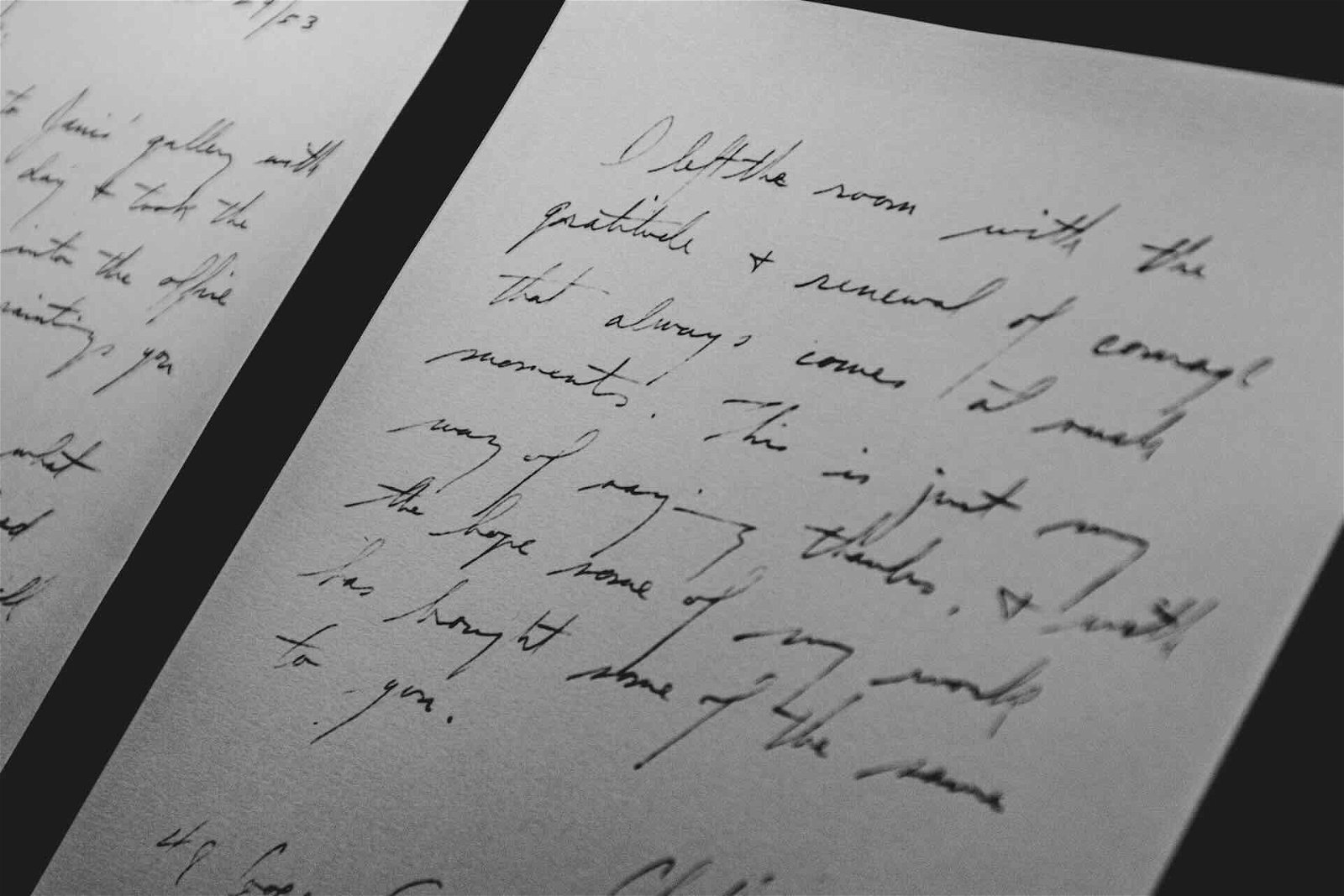In the age of laptops, smartphones and tablets, it is a common belief that modern technology has led to the decline of penmanship and that we’ve become sloppy in the once great art form of handwriting. Turns out, our penmanship has been terrible for centuries.
A closer examination of historical records reveals that messy handwriting, or cacography, has been a persistent issue for centuries. In a 2023 study by Misha Teramura, published in the Huntington Library Quarterly, and an article last week in The Conversation, Teramura sheds light on the long-standing challenges of legible handwriting, debunking the myth that technology is solely to blame.
Every few years, the public is bombarded by cycles of articles citing the death of penmanship, and it typically points the finger at the latest technological trend: computers, tablets, smartphones, ChatGPT, and the list will go on for decades of technology, yet to grace us with their development.
“These news stories also seemed to imply that our modern inability to write clearly represented a profound historical rift, a disturbing alienation from a basic skill that had connected generations across centuries, and what I wanted to add to this conversation is that there is, in fact, a much longer history of people writing illegibly,” Dr. Teramura, a literary historian at the University of Toronto and author of The Cacographic Renaissance: Reading and Not Reading in Early Modern English Manuscript Culture, told The Debrief.
In his study, Teramura provides a comprehensive analysis of the phenomenon of cacography in early modern England. Teramura’s research highlights that messy handwriting was a common issue long before the advent of modern technology. Historical figures such as George Talbot, the Earl of Shrewsbury, and Robert Devereux, the Earl of Essex, were notorious for their illegible handwriting. The study draws on a diverse array of sources, including letters, plays, prose, and the testimony and practices of printers and scribes, to illustrate the widespread nature of this problem.
“As I was reading some recent news articles on penmanship, I was struck by what seems to be a widely shared assumption that untidy or illegible handwriting is a new phenomenon,” Teramura explained. “On the one hand, this is understandable and intuitive: the more we type, the less routine practice we have with the skills of deftly handling a pen to write clearly or elegantly…”
Teramura, an expert on 16th—and 17th-century handwritten documents, says he isn’t an expert on modern handwriting research and the impact technology has had on it, but he knows for a fact that sloppy penmanship is not some new and dark shift in human cultural traditions. We’ve been writing ‘chicken scratch’ for a while now, so we probably all just need to calm down a bit.
According to his research, various factors contributed to poor handwriting in the past, much like today. Physical conditions such as injuries, arthritis, and other ailments often impair an individual’s ability to write legibly. For instance, George Talbot attributed his “evil favoured writing” to gout, which limited the mobility of his fingers over time. Additionally, the quality of writing materials and the conditions under which writing took place also played a significant role. The writing master John Davies of Hereford noted that poor handwriting could result from thick ink, coarse paper, or inadequate lighting.
“Even the most accomplished calligraphers might find themselves in situations where they don’t write neatly—scribbling a note down in the middle of the night, for example—and anyone might encounter medical circumstances that make it hard to write,” Teramura explained. “So, in that way, the potential for messy handwriting is universal.”
The concern for many, especially today, is that good penmanship is somehow an indicator of one’s social or cultural value, and that nice handwriting represents one’s character and intelligence.
However, it’s a bit more complicated.
In early modern England, poor handwriting could be a deliberate act to assert social or political power. For example, aristocrats like Robert Devereux often wrote in a free italic hand that disregarded calligraphical rules, making their handwriting difficult to read. This practice was sometimes seen as a way to demand the labor of their readers, reflecting their social status and power. The study also notes that neat handwriting was often associated with professional rather than aristocratic education, as suggested by Hamlet’s disdain for writing “fair” in Shakespeare’s famous play.


Moreover, the study notes that in early print shops, compositors often struggled with difficult manuscripts, leading to errors in printed texts. The labor involved in reading challenging handwriting could vary based on factors such as the reader’s familiarity with the writer’s hand and the social and political relationship between reader and writer. In some cases, readers might collaborate to decipher a difficult manuscript, while in others, they might simply give up.
“Good and bad penmanship can accrue social or cultural values, although, crucially, these associations can change over time (and even be inconsistent within the same cultural milieu),” Teramura said, explaining that our modern reasoning for why we think the death of penmanship is ‘bad’ is not some a priori objective sentiment, but purely a temporary cultural ideology. In simple terms, opinions on penmanship constantly change.
“I have sometimes encountered the opposite sentiment: that messy handwriting is a characteristic of brilliantly original thinkers, whose thoughts and writing refuse to conform to inherited parameters of orderly expression,” he said. “Some people may even feel that penmanship, as a skill that is no longer strictly necessary for many people’s lives, carries an air of the superfluous or the luxurious, perhaps implying that those who do write with calligraphic elegance have the privilege of time and means to cultivate rarified skills.”
Seemingly, the modern myth that technology is responsible for poor handwriting doesn’t hold up historically. While many may lament the death of penmanship and blame teachers or schools or the fact that keyboards and touch screens have replaced the writer’s quill and pen, their uproar often oversimplifies a very basic fact: Things change.
Anne Trubek, author of The History and Uncertain Future of Handwriting, argues that learning to handwrite or type teaches the brain the same lesson: automaticity. It’s that ability that, after one does something enough times, becomes second nature. After someone learns how to ride a bike and has done it enough times, they don’t often need to think about peddling or turning the handlebars.
“That’s what we want children to acquire when learning to write,” Trubek told the BBC in 2017. “You and I don’t think ‘now make a loop going up for the ‘l’’ – or “now look for the letter ‘r’ on the keyboard.’ Therefore, our brains are freed to think about higher order concerns.”
Writing is about communication, and Trubek argues that one can communicate just as well via a text message on an iPhone versus a stylized penned note on paper.
According to her, the two biggest criticisms she receives about her position on handwriting circle around a “loss of history” and a “loss of personal touch.”
Regarding the “loss of history,” Trubek and Teramura probably agree. Most people can’t read old handwritten historical documents anyway. Outside of the poor penmanship, the style and even language have changed so much that reading those historical texts often requires significant expertise and training. As for the latter, the “personal touch” of a handwritten note, Trubek argues that there are lots of ways to show you care.
“What it signals is that someone took time; that it was a more labour-intensive, and therefore meaningful, communication. I counter that there are lots of ways to show we care and take time to do so – send a batch of cookies, say, if your cursive isn’t good,” Trubek explained.
While technology, such as smartphones and tablets, has influenced contemporary handwriting practices, the issue of illegible handwriting is not new. Humans have been terrible writers for centuries, and that has been influenced by various physical, social, and cultural factors.
Technology may have changed the way we write, but the struggle for legibility is far from a new phenomenon.
MJ Banias covers space, security, and technology with The Debrief. You can email him at mj@thedebrief.org or follow him on Twitter @mjbanias.

